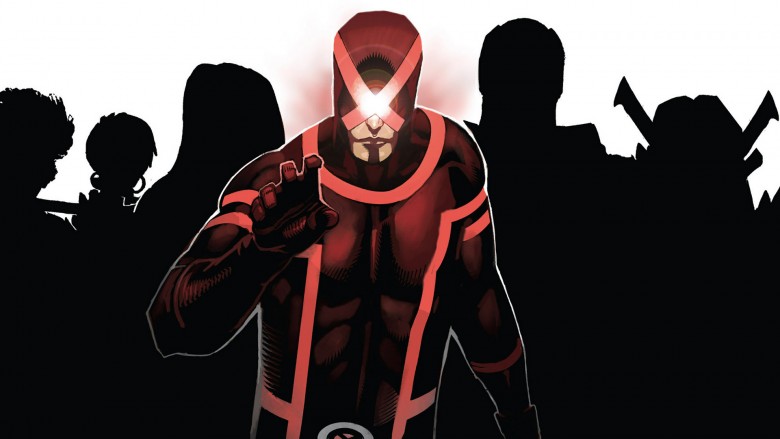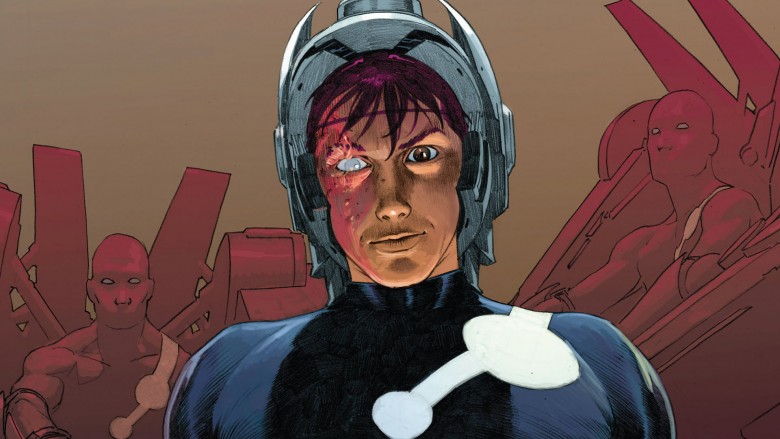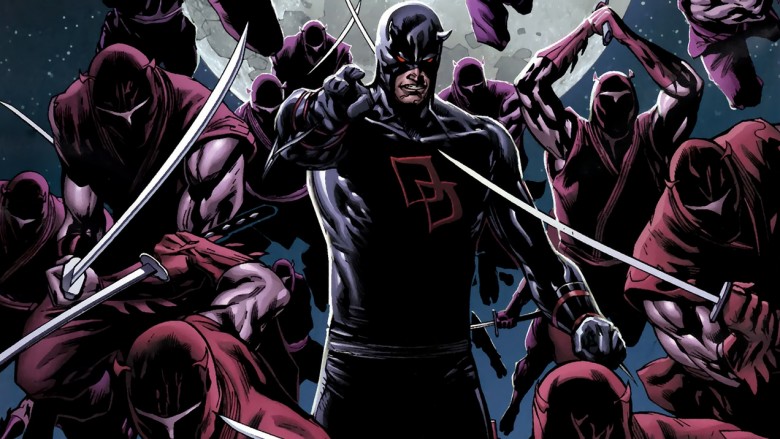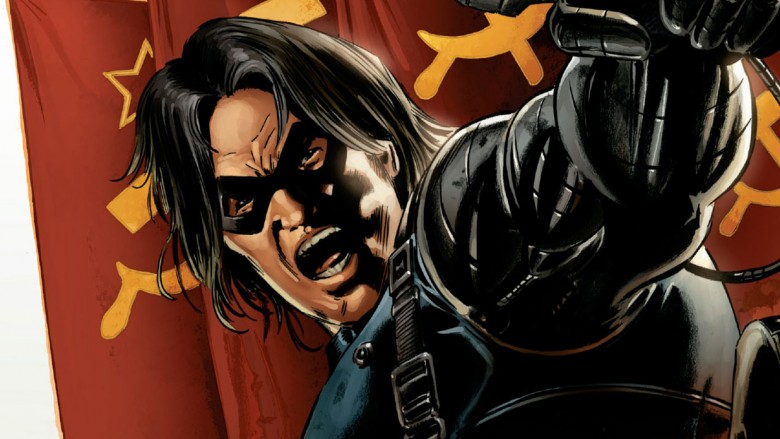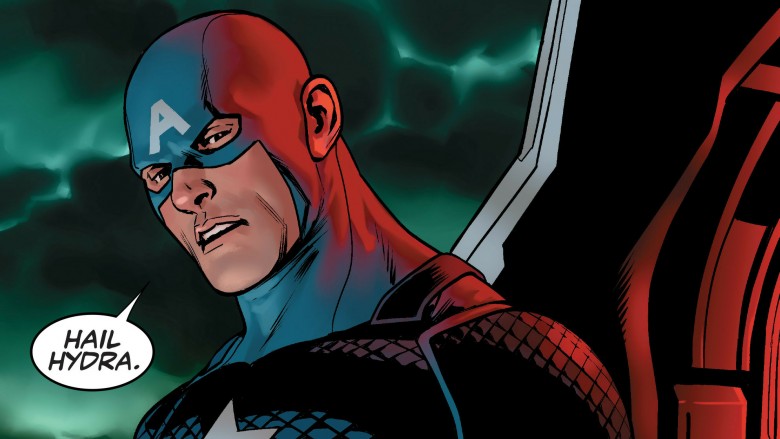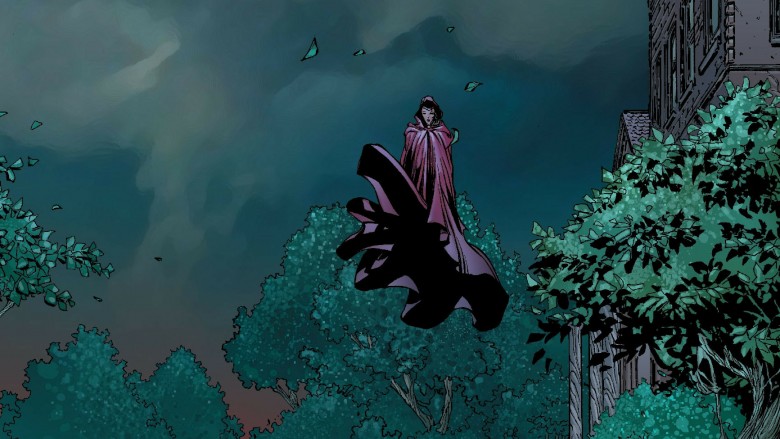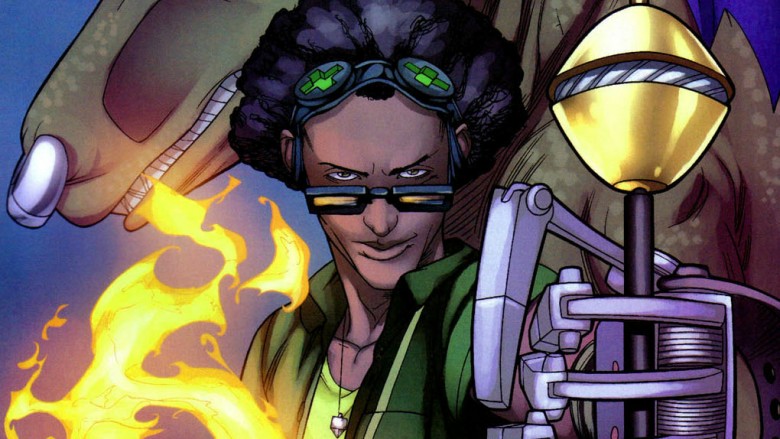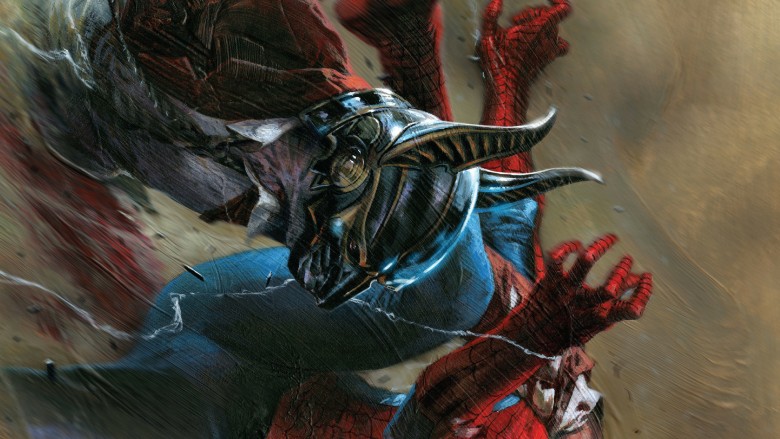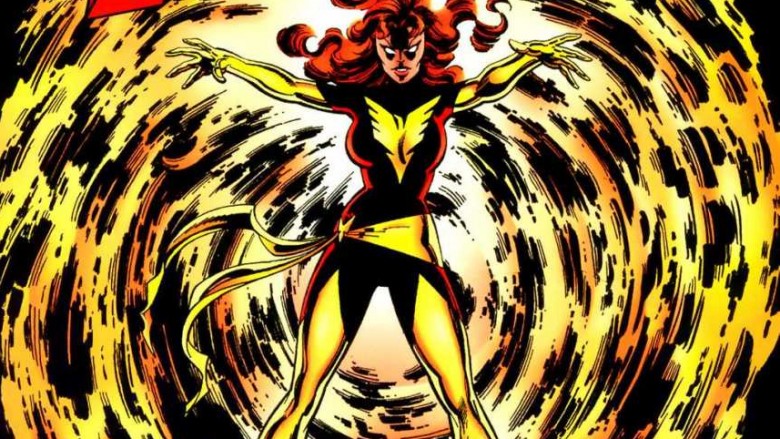How Marvel Turned These Heroes Into The Greatest Villians
They say that a hero is only as good as his or her villains—but what happens when the villain is a former hero? Marvel has created many memorable baddies over the years—the Red Skull, Doctor Octopus, Loki, and Galactus all come to mind—but some of the House of Ideas' best antagonists used to be some of its greatest heroes.
Getting readers to root against the same people they used to cheer for is a tricky thing to pull off, too, but Marvel seems to manage it time and time again. How, exactly? Sometimes, it's mind control. Sometimes, it's demonic possession. And sometimes, every once in awhile, it's just a character who's in the wrong place at the wrong time and never fully recovers.
Cyclops
If you want to break a person, have them dedicate their lives to a single cause and then show them their cause is wrong. Despite abandoning his wife and child and, later, embarking on a psychic affair with Emma Frost, Cyclops doesn't really break bad until he loses faith in Professor X, his moral guidepost and surrogate father.
As the first and most loyal X-Man, Scott Summers spent his entire adult life fighting for Xavier's dream of peace between man and mutant. But Professor X, for all of his high-minded ideals, wasn't exactly perfect. First, Cyclops learns that the Danger Room, the X-Mansion's high-tech training facility, is actually a sentient machine that Xavier kept captive for years. Next, Professor X admits that he played with Cyclops' mind, erasing all memories of Gabriel, Scott's younger brother.
That's enough to make Cyclops question everything he knows, and before long, Scott is leading covert black ops teams and putting out hits on former allies like Mystique and Bishop. When the Phoenix Force invades, Cyclops loses control and kills Professor X outright, which ultimately leads to a full-on mutant revolution, with Cyclops as its figurehead.
All that being said, the action that really solidifies Cyclops' status as one of the Marvel's biggest villains isn't actually his fault: after Cyclops catches M-Pox disease and dies, Emma Frost uses her powers to make the world think Scott is responsible for destroying the Terrigen Mists, which give the Inhumans their powers. As a result, Cyclops goes down in history as a terrorist, not a hero, and thanks to the long and winding journey, Scott's descent into villainy feels less like a cheap plot twist and more like a Shakespearean tragedy. Just, y'know, with superpowers.
Reed Richards
It's a classic story: boy meets girl. Boy and girl and their friends turn into superheroes when a lab experiment goes wrong. Boy asks girl to marry him, and when she says no, boy turns into one of the most dangerous supervillains of all time.
That's right: sometimes, a supervillain origin is as simple as a broken heart. While Marvel's main Mr. Fantastic is off rebuilding the multiverse after the Secret Wars, the Ultimate Reed Richards has had a pretty rough go of it. After Ultimatum, in which Magneto destroyed New York with a tidal wave, Reed proposes to Sue Storm. She declines, and Reed takes it hard.
Like, really hard. After Sue turns him down, Reed moves in with his parents. Next, he fakes his own death and orchestrates an alien invasion in order to cover up the theft of high-tech weaponry from S.H.I.E.L.D.'s stockpile. The resulting battle leads to a brief of exile in the Negative Zone, and when Reed returns to Earth, he builds a base in northern Germany called the Dome, where he uses technology to cram 900 years of human evolution into just a few months. When Reed and his superpowered charges emerge, he christens them the Children of Tomorrow and renames himself the Maker.
It's all downhill from there. After a number of conflicts with the Ultimates, a brief team-up with Kang the Conqueror, and a battle with Galactus, Reed gets tangled up in the events of Secret Wars and ends up stuck on Marvel's main Earth, where he uses his super intellect to fight the New Avengers and the Infamous Iron Man and lead the terrorist group W.H.I.S.P.E.R.
Daredevil
They say power corrupts. Well, so does demonic possession—and in Daredevil's Shadowland saga, the Man without Fear falls victim to both. Very little in Matt Murdock's life goes according to plan, but if you think putting Daredevil in charge of the cadre of assassins known as the Hand and then having him conquer Hell's Kitchen in order to rid it of all crime—and police officers—is a spectacularly bad idea, well, you wouldn't be wrong.
It begins in Daredevil #500 with Murdock taking control of the Hand to keep it out of the Kingpin's, um, hands, and ends in the Shadowland miniseries as a team of superheroes that includes Elektra, Spider-Man, Wolverine, and the Punisher fight against Daredevil and his army in order to take back Hell's Kitchen. Along the way, Daredevil turns the Hand into his own personal army, letting them run roughshod over New York's criminal element, even if that means resorting to increasingly brutal methods of keeping the peace. However, when Daredevil transforms a ruined city block into a temple and names it Shadowland, it's one step too far—even the Kingpin grows worried—and Daredevil's former allies team up to bring his reign of terror to an end.
That's not easy, of course, especially since the mysterious cult known as the Snakeroot Clan has covertly transformed Matt Murdock into a vessel for the Beast of the Hand, an ancient demon who wants to destroy the world. Even on a bad day, Murdock is a formidable foe, and if it wasn't for Iron Fist. who quite literally punches the evil out of Daredevil, it's likely that New York would still be under the Beast's control.
Bucky Barnes
While death in comics is more like a revolving door than a closed one, some characters that die actually stay that way. Thomas and Martha Wayne are never going to see what little Bruce has become. Uncle Ben won't return to give Peter Parker another lecture about power and responsibility. And, for decades, Captain America's doomed sidekick Bucky Barnes was considered untouchable. After all, he was dead for a long time, and things seemed to be going just fine. If it's not broke, don't fix it, right?
In 2005, Ed Brubaker, Steve Epting, and Michael Lark challenged that idea big time. Not only did the team behind Captain America bring Bucky back to life, but through some cryogenic freezing and a touch of brainwashing, they turned him one of Captain America's most dangerous foes.
After the plane that "killed" Bucky exploded, Russian sailors rescued the amnesiac teen, gave him a bionic arm, and transformed him into the Winter Soldier, a deadly assassin who worked in the shadows, quietly influencing some of the biggest events in Marvel's history.
Thanks to Bucky's 60-year absence, Brubaker and his collaborators had plenty of room to weave a detailed, compelling, and continuity-heavy backstory for the Winter Soldier, while the personal connection between Bucky and Cap—who considered Bucky's death his biggest failure—was prime fodder for interpersonal drama. Besides, the sheer audacity required to bring Bucky back to life made the Winter Soldier's return one of the few resurrections that was just as shocking to fans as it was to the characters. Despite all odds, Bucky's return worked out perfectly. If you don't believe us, just look at the Marvel Cinematic Universe, which has gotten two feature films out of the Winter Soldier saga—and counting.
Captain America
Marvel didn't let Bucky have all the fun, of course. Back in the '40s, Marvel (or Timely Comics, as it was known at the time) introduced Steve Rogers with one unforgettable image: Captain America, dressed in the stars and stripes, punching Adolf Hitler in the face. The cover of Captain America #1 established a foundation that lasted for over 75 years, establishing up a hero that's tough, proactive, and resolutely anti-fascist.
Over the years, Cap's fought villains like Hate-Monger (a Hitler clone) and the Master Man, a Nazi supersoldier. He took on the United States government when it turned out that the President was secretly the leader of a crime cabal known as the Secret Empire. In Civil War, Captain America challenged Tony Stark and S.H.I.E.L.D. over the Superhero Registration Act, which Rogers considered a gross violation of human rights.
That's what made the most recent Captain America storyline, in which old Winghead is outed as an agent of HYDRA, such a gut-punch. Oh, sure, there's a perfectly sensible in-story reason for Cap's abrupt turn: a small child named Kobik hatched in a S.H.I.E.L.D. laboratory after scientists fused fragments of Cosmic Cubes together, and then fell under the Red Skull's sway and rewrote Cap's memories to make him believe he'd grown up as a HYDRA sleeper agent.
But while that's a fine story, it's not really why the transformation works. After years of watching Captain America fight dictators, watching him operate under the delusion that he's actually been a traitor all along is a great way to make the audience turn on one of Marvel's most popular characters—at least those who didn't turn on Marvel itself. Basically, Captain America legitimately pissed people off, and that's one of the best qualities a villain can possibly have.
The Scarlet Witch
Over the years, many villains have tried to defeat the Avengers. None have succeeded. That's why, when Marvel decided it was time to disband the team, it made sense that the threat would come from within. It's basic logic: nobody's more powerful than the Avengers, not even the Avengers themselves.
The Scarlet Witch was the perfect woman for the job, too. When she debuted in X-Men #4, Wanda was part of the Brotherhood of Evil Mutants, a terrorist group led by her father, Magneto. As an Avenger, the Scarlet Witch used dark magic to give birth to two children, who she later erased when she discovered the truth about their origins. It doesn't take a big leap to imagine that Wanda's chaos magic, which has always been unreliable, and the stresses of the superhero life would ultimately push her too far.
While most of the Avengers Disassembled storyline shows Earth's mightiest heroes dealing with a non-stop barrage of seemingly endless attacks, it turns out that the entire thing is Wanda's fault. As Doctor Strange explains, every time the Scarlet Witch uses her powers to change reality, her grasp on the real world slips a little bit. All those heroic things that she did? They all contributed to her madness—and, at the end of the story, the Avengers' overall destruction.
Alex Wilder
It's a formula that professional wrestling mastered a while ago: if you want to make a heel that the audience will absolutely hate, create a team of lovable heroes and then have one betray the others. It's a technique that paid off for Marv Wolfman and George Perez back in their New Teen Titans days, and it worked out pretty well in Brian K. Vaughan and Adrian Alphona's Runaways, too.
After watching their parents sacrifice a young girl, a group of teenagers learn that their parents were secretly operating as a cabal of supervillains—and that each one of them are being groomed to take over the family business. Shocked and horrified, the kids decide to fight back, leading to an epic adventure featuring mad scientists, time travellers, aliens, and a whole lot of teenage angst.
Runaways' real hook isn't seeing the teens' newfound superpowers or the battles against their evil parents— it's watching all of them grow, finding their place in the world and forging bonds that'll last for life. Throughout the series, Karolina, daughter of Majesdanian aliens, comes to grips with her burgeoning homosexuality. Gert, a cynical teen with a pet dinosaur, learns how to trust others. Nico, a trainee witch, discovers she doesn't need to cling to others when the going gets rough, and figures out how to stand up for herself.
Runaways is a powerful and endearing coming-of-age story, which why it's such a devastating blow when it turns out that the Runaways' leader, Alex Wilder, has been working against the group the whole time. Over 18 issues, the Runaways start to feel less like characters on a page and more like a group of real-life friends. That makes Alex's long-simmering betrayal hurt (especially when he steals his teammates' powers, robbing them of everything that makes them special), and while it's a brutal blow to the teenage superteam, it's also the foundation for an excellent and despicable villain.
Angel
One great way to create a villain is to take away the thing they care about most, knowing that they'll do almost anything to get it back. Over the years, most X-Men have gone rogue at one point or another—along with time travel, it's just kind of what they do—but few have had it quite as bad as Warren Worthington III, the founding X-Man known as Angel.
At the beginning, Warren has it all: dashing good looks, lots of money, and a beautiful pair of feathered wings. But Warren's fortunes change in X-Factor #10, when a group of superpowered mercenaries called the Marauders attack Angel and pin his wings to a sewer wall. Warren escapes, but not before his wings are seriously damaged. In X-Factor #15 the team's PR manager Cameron Hodge tells doctors to amputate Warren's wings in order to make sure he survives.
Hodge is, of course, a bad guy, but his plan works. Warren falls into a deep, deep funk and only snaps out of it when he's rescued by Apocalypse and given new mechanical wings that, for some reason, turn his skin blue. Even after Warren escapes Apocalypse's influence and rejoins the good guys, his happy-go-lucky attitude doesn't return—after discovering the truth behind Hodge's deception, Warren lops off his ex-roommate's head (don't worry, Hodge survives) and spends the next decade brooding over his loss.
On the plus side? Warren's Archangel getup looks really, really cool.
The Scarlet Spider
It's not that people didn't like Ben Reilly, the Peter Parker clone who took over as the friendly neighborhood Spider-Man in the '90s. They just liked Peter more. Add in lingering resentment over the storyline during which Reilly made his big debut, the unwieldy multi-title cross-over known as The Clone Saga, and you end up with a character that has, let's say, a complicated relationship with fans.
But if Reilly can't replace Spider-Man, at least he can be a pain in the web-slinger's butt. In Marvel's recent Clone Conspiracy event, Reilly returns to the main Spider-Man titles for the first time since the '90s, and this time, he's up to no good. Posing as the Jackal, who cloned Peter Parker the first time around, Reilly founds New U, a company that claims to have unlocked the secret of eternal life. Naturally, that secret is cloning—Reilly and the first Jackal have discovered how to rebuild new bodies while keeping the original person's memories intact—and Reilly promptly begins rebuilding everyone, hero or villain, that Spider-Man has ever lost.
The best villains think they're the heroes of their own stories, and Ben Reilly is no exception—by bringing back Doctor Octopus, detective Jean DeWolff, and Parker's long-lost love, Gwen Stacy, Reilly really thinks he's correcting Peter's mistakes. But when Reilly offers to resurrect Uncle Ben, Parker realizes that Reilly's gone too far, and—with the clones' help—he puts Reilly down for good.
Or does he? In a follow-up, it turns out that Ben Reilly escaped New U's destruction, and Marvel's new Scarlet Spider series will follow the onetime hero as he grapples with both the good and the bad sides of his legacy. That's an interesting concept, and thanks to his heel turn, it looks like Reilly will finally be the interesting—and unique—character he always should've been.
Jean Grey
And, finally, the big one. The Dark Phoenix Saga is, without a doubt, the best-known X-Men story of all time. It's the basis of one feature film, with another currently in pre-production. It's been adapted for two separate animated series. It's been reprinted in collectible editions at least seven times, and is widely considered the highlight of Chris Claremont and John Byrne's seminal run on Uncanny X-Men.
And it's all thanks to Jean Grey. When Jean joined the team in X-Men #1, she was little more than the token female. She spent most of her time doing chores, and she passed out when she used her telekinetic abilities to lift anything heavier than a chair. Under Claremont's pen, that changed. From X-Men #94 onward, Jean slowly grew more and more powerful—and, as a result, her personality flourished. By the time Jean stares down a solar flare, which super-charges her powers, she's a force to be reckoned with. Afterwards, she's nearly unstoppable.
That's why, when Jean (with a little help from the mutant Mastermind and the rest of the Hellfire Club) loses control of her powers, she's so scary. There's something both awesome and horrifying about watching the girl who spent her spare time sewing the team new costumes obliterate an entire planet, and the story works precisely because Claremont and Byrne gave the story—and Jean—room to grow. As a reader, it's fun to watch Jean come into her own—and when that ends up being a bad thing, it's both crushing and terrifying in equal measure.

